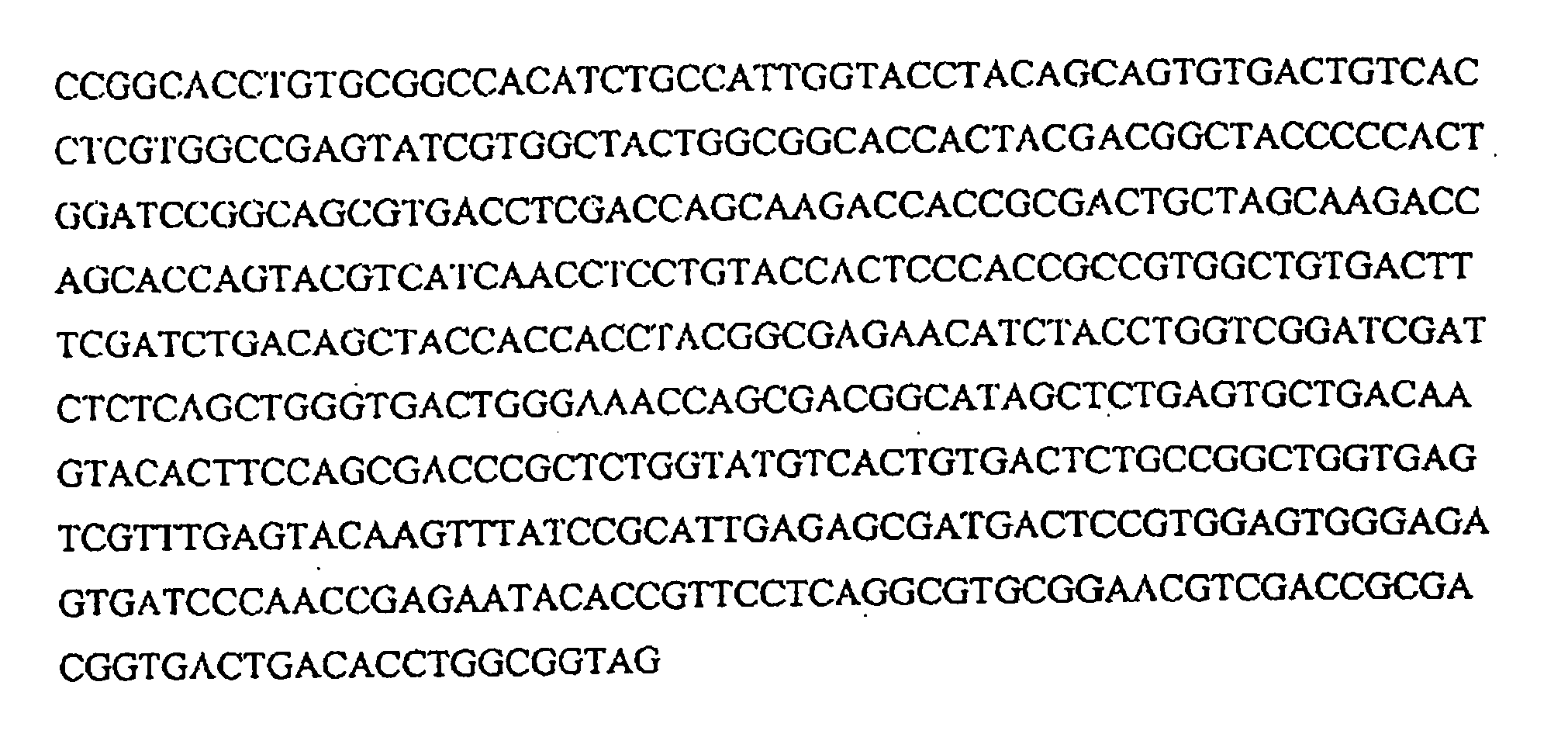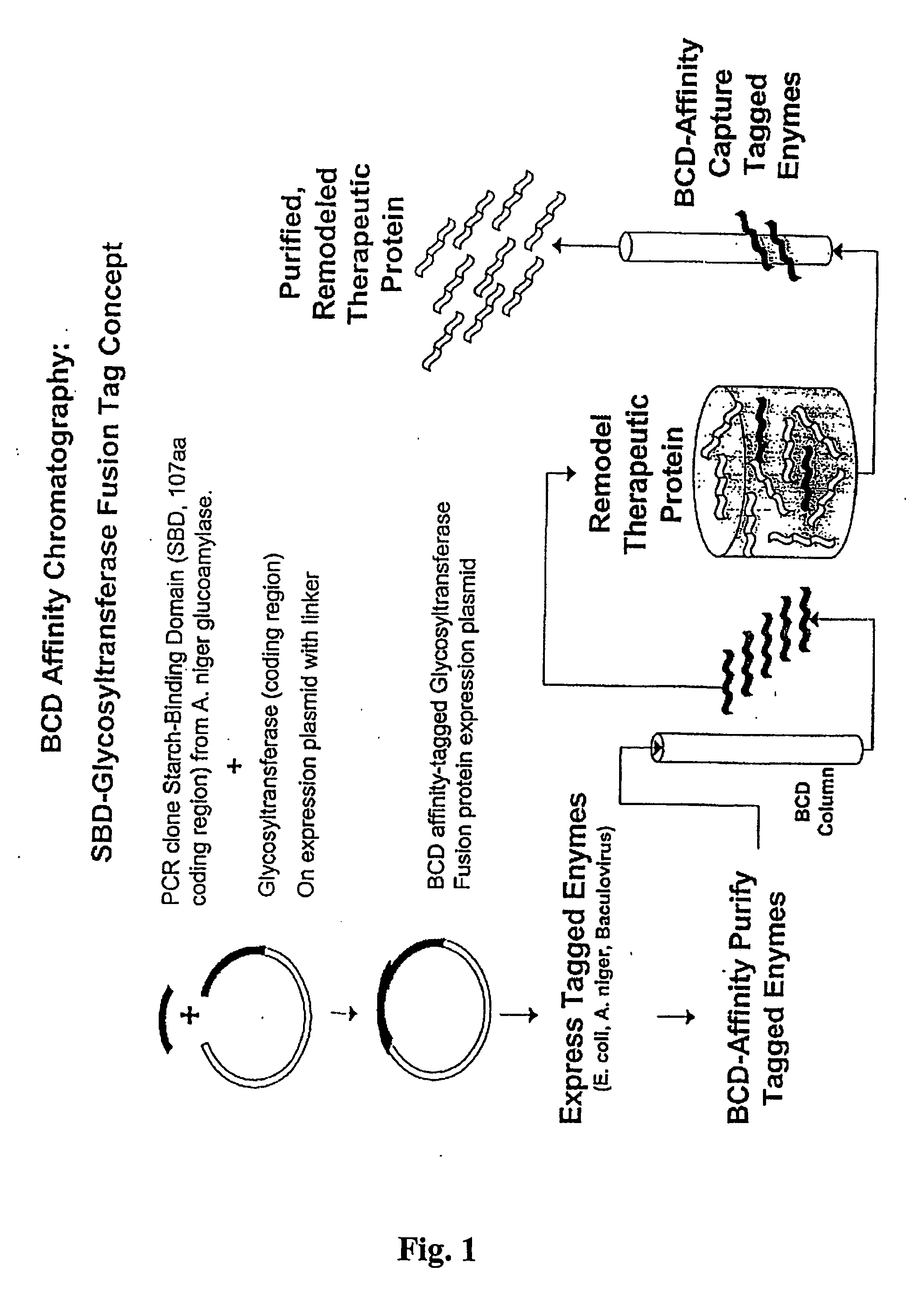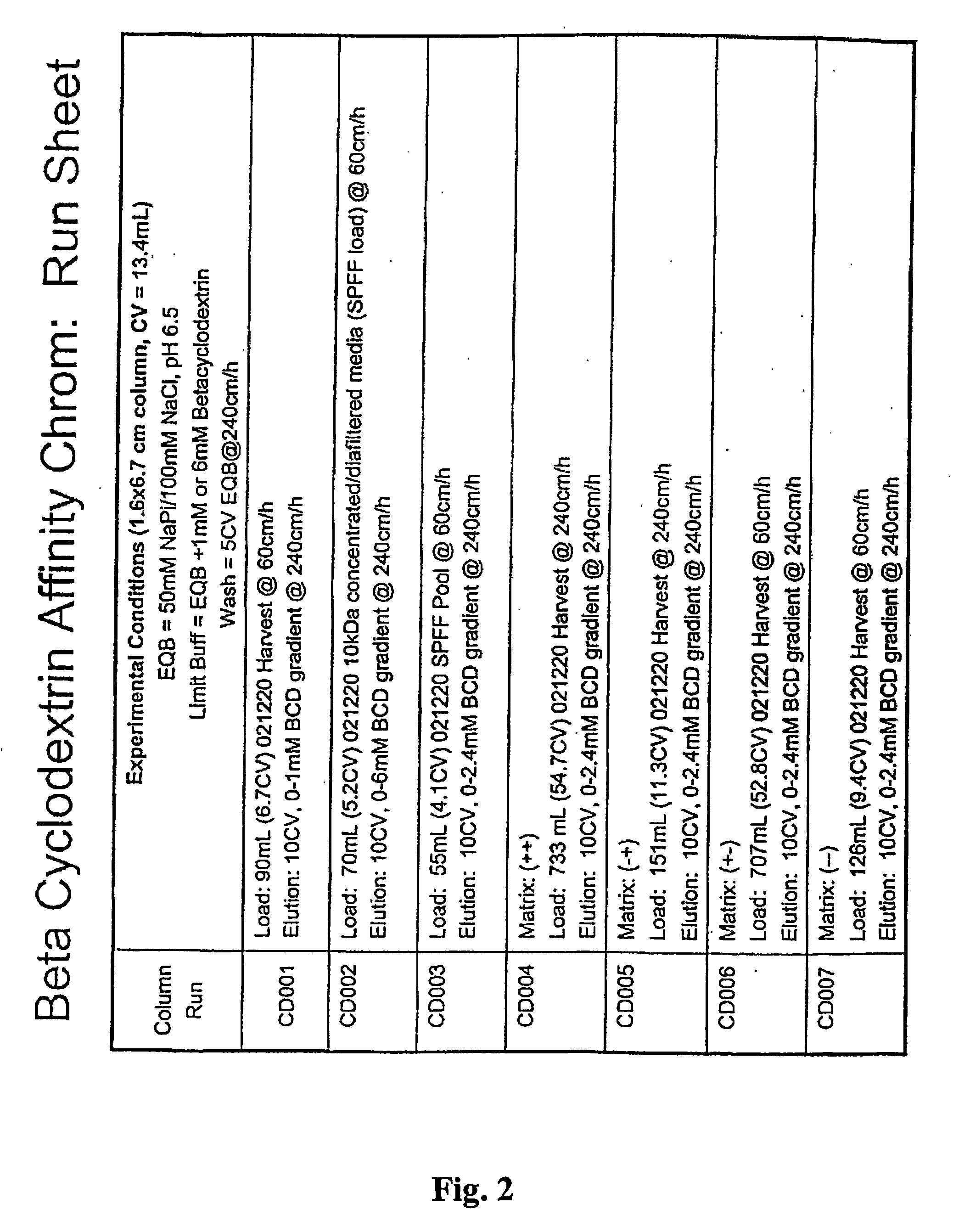Cyclodextrin affinity purification
a technology of cyclodextrin and affinity purification, which is applied in the direction of enzymology, peptides, transferases, etc., can solve the problems that the application of cyclodextrin to the synthesis of saccharides is not as widely accepted as those methods, peptides and nucleic acids
- Summary
- Abstract
- Description
- Claims
- Application Information
AI Technical Summary
Benefits of technology
Problems solved by technology
Method used
Image
Examples
example 1
Procedure to make Beta Cyclodextrin Affinity Resin place in an open chromatography resin.
[0277] 2. Hydrate the resin with 100 mL DI water, allowing resin to drain in column at room temperature.
[0278] 3. Remove resin from column and place in a 50 mL Falcon tube.
[0279] 4. Dissolve 11 g of beta cyclodextrin (BCD, Sigma Cat # C-4767) in 20 mL of 1M NaOH. (˜0.4 M solution of BCD)
[0280] 5. Add BCD solution to resin in 50 mL tube. Final volume=47 mL.
[0281] 6. Place resulting suspension in 40-45° C. water bath for 48-72 hours.
[0282] 7. Pour resin into chromatography column and rinse with 100 mL DI water. Allow to drain.
[0283] 8. Remove resin from column and place in a clean 50 mL Falcon tube. Add 1M ethanolamine to resin to a total suspension volume of 50 mL and incubate 17-24 hours at 40° C.
[0284] 9. Rinse resin in column with 100 mL DI water, and allow to drain.
[0285] 10. Place resin into 50 mL Falcon tube, and add 0.1M NaOH to a total volume of 40 mL.
[0286] 11. Store resin in ...
example 2
Starch Binding Domain Construct
[0288] The Starch Binding Domain(SBD) gene was isolated by PCR of pGAST ampr. The oligonucleotides used in the PCR are 5′SBDNedI (5′-AGGTATCATATGTGTACCACTCCCACCGCCGT-3′; SEQ ID NO. 6) and 3′SBDBAMH (5′-GTTTATGGATCCCCGCCAGGTGTCGGTCAC-3′; SEQ ID NO. 7). The SBD PCR reaction was analyzed by agarose gel electrophoresis, and the ˜330 bp band was gel purified. The pCWIN2 and gel purified SBD PCR product were digested by NdeI and BamfHI restriction endonucleases, and the reactions were analyzed by agarose gel electrophoresis. The digestion products representing the linear vector (˜5 kb) and SBD (˜330 bp) were then gel purified. The digested gel purified vector and insert were ligated together using T4 DNA tranformants were identified by restriction endonuclease screening. A transformant was shown to contain a ˜330 bp insert, and following sequencing it was proven that the insert is the SBD. The pCWIN2SBD was then transformed into chemically competent JM109 ...
PUM
| Property | Measurement | Unit |
|---|---|---|
| temperature | aaaaa | aaaaa |
| Tm | aaaaa | aaaaa |
| temperature | aaaaa | aaaaa |
Abstract
Description
Claims
Application Information
 Login to View More
Login to View More - R&D
- Intellectual Property
- Life Sciences
- Materials
- Tech Scout
- Unparalleled Data Quality
- Higher Quality Content
- 60% Fewer Hallucinations
Browse by: Latest US Patents, China's latest patents, Technical Efficacy Thesaurus, Application Domain, Technology Topic, Popular Technical Reports.
© 2025 PatSnap. All rights reserved.Legal|Privacy policy|Modern Slavery Act Transparency Statement|Sitemap|About US| Contact US: help@patsnap.com



